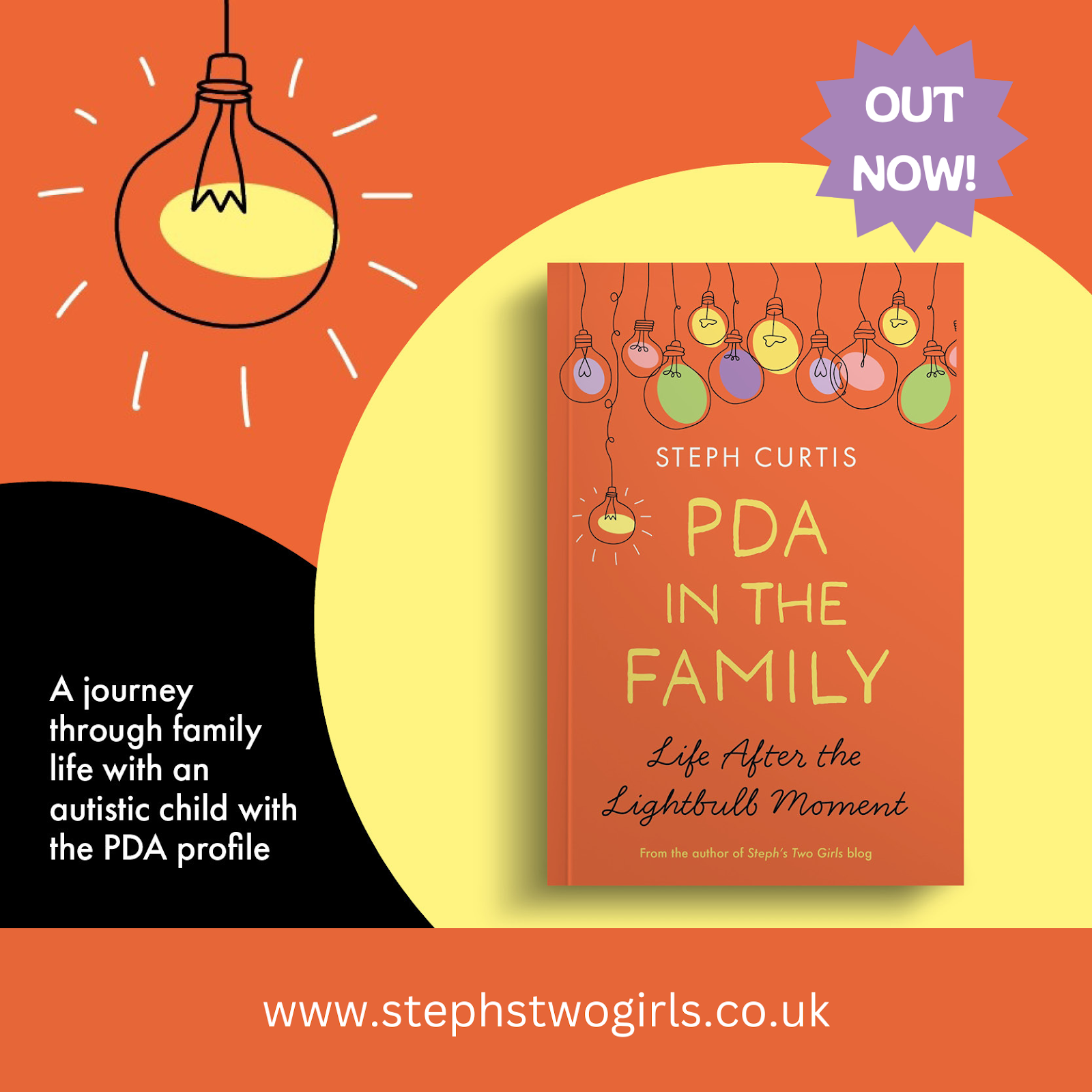There are many better places than this blog to get full and proper advice about EHCPs; IPSEA, SOSSEN and Special Needs Jungle for starters. However, I thought it might help if I offered a suggestion which I discussed with this parent - the idea of a One Page Profile.
To give a little bit of background to this post, our younger daughter was diagnosed with autism at the age of two (and a half. Halves are very important, aren't they?). We applied for a formal Statement of Educational Needs when she turned four, just before she started at a mainstream infant school (excuse the photo quality above - amazing how much phone cameras have improved, isn't it?!).
The Statement was a precursor to the EHCP; different format paperwork but overall intended to cover the same ground. It involved assessments considering the needs of a child and then documenting what support and provision would best help them.
Five years ago, the Government produced a new SEND Code of Practice, which led to EHCPs. This document explains the duties of local authorities, health bodies, schools and colleges to provide for those with special educational needs under part 3 of the Children and Families Act 2014. The code of practice is a mind-boggling 292 pages long, but luckily for us parents who do have better things to do, there's an easy read guide for parents of 'just' 59 pages to help us out.
We were one of the first families in our county to receive an EHCP because we agreed to take part in a pilot scheme. Five years on, it feels as if nothing much has changed. The most recent EHCP which our daughter received was a compilation of six different previous versions; it had become unclear and jumbled. More importantly, it was not relevant to her current situation which is that she has been out of school since May this year with no support or input. Which, along with the fact that her needs have also changed, and that it is several years since she was last assessed for speech and language and occupational therapy issues, is why we felt the need to request a reassessment recently.
As we are in the middle of that process right now (and I'm honestly losing the will to live), this post is not about that. I decided to concentrate on Section A, which is the very first part of the EHCP (obviously!). Section A is supposed to cover the views, interests and aspirations of the child and their parents, or of the young person. It has no statutory force, so some might say it matters not what is written (or typed) in there, but it is the very beginning of the document and a good opportunity to introduce the child for whom the Plan is being produced, as succinctly as possible.
In previous years we have always included our version of a one page profile. This is a single side of A4 which summarises the interests, strengths and challenges for a child. The idea is that it is presented in a simple format so that others who have not met the child before can quickly get a 'flavour' of the child and how to help them.
So our Section A will begin with our standard one page profile. We have updated this every year as our daughter's interests have changed, and always tried to give it to anyone new working with her.
I think it's important to make sure a photo of the child is used if possible, because this highlights to anyone reading who the information actually relates to. The EHCP format used by our county (don't get me started on why there is a different format for every county in the country...) does include space for a photo on the front of the paperwork so you may not feel it necessary to use another one.
The rest of section A can include any further information which parents or child/young person want to offer, although I always recommend bearing in mind that not everyone will have the time to read war and peace at this stage. It's a good idea to give a little more detail of both strength and difficulties in the four areas of need detailed in the Code of Practice: Cognition and Learning, Communication and Interaction, Social, Emotional and Mental Health, and Sensory and/or Physical Needs. It's also good to talk about health issues here, and also hopes and concerns for the future - what can't the child access, what would you like them to access?
Hopefully these prompts help other families who may be struggling with this somewhat challenging process; further advice I always give is to talk to as many parents in your local area as possible. There's a lot of great information and knowledge out there among SEND parents, no-one should ever feel alone!
What is PDA (Pathological Demand Avoidance)?
Ten things you need to know about Pathological Demand Avoidance
Does my child have Pathological Demand Avoidance?
The difference between PDA and ODD
Strategies for PDA (Pathological Demand Avoidance)
Pathological Demand Avoidance: Strategies for Schools
Challenging Behaviour and PDA
Is Pathological Demand Avoidance real?
Autism with demand avoidance or Pathological Demand Avoidance?
To follow me on other social media channels, you can find me at the following links or click the icons below!
























No comments:
Post a Comment
Comments are always very much appreciated and can really help the conversation go further...